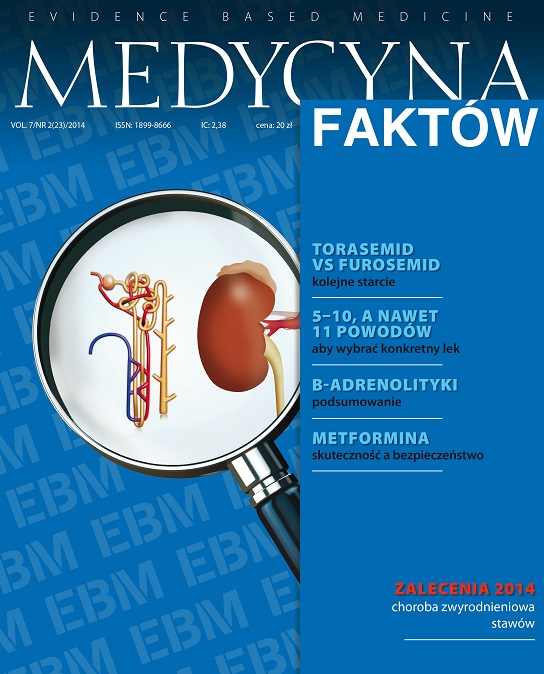Torasemid i furosemid – podobieństwa i różnice Artykuł przeglądowy
##plugins.themes.bootstrap3.article.main##
Abstrakt
Torasemid i furosemid to przedstawiciele diuretyków pętlowych o identycznym mechanizmie działania moczopędnego. Należą do pochodnych kwasu sulfamylobenzoesowego. Różnice w budowie chemicznej powodują, że leki te mają odmienne właściwości farmakokinetyczne i dodatkowe działanie. Torasemid w porównaniu z furosemidem posiada większą biodostępność, wyższy stopień wiązania z białkami, a także dłuższy czas połowicznego rozpadu. Właściwości te sprawiają, że działa on szybciej, dłużej i rzadziej powoduje gwałtowne mikcje niż furosemid. Torasemid po podaniu doustnym dobrze wchłania się z przewodu pokarmowego, nawet w sytuacji przewodnienia w chorobach serca, nerek oraz wątroby. Siła działania torasemidu jest czterokrotnie większa niż siła furosemidu. Dawce 40 mg furosemidu odpowiada 10 mg torasemidu. Torasemid ma dodatkowo aktywność przeciwaldosteronową i hamuje proces włóknienia oraz przebudowy miokardium.
##plugins.themes.bootstrap3.article.details##
Copyright © by Medical Education. All rights reserved.
Bibliografia
2. Murray M., Deer M., Ferguson J. et al.: Open-label randomized trial of torsemide compared with furosemide therapy for patients with heart failure. Am. J. Med. 2001; 111: 513-520.
3. Muller K., Gamba G., Jaquet F. et al. Torasemide vs furosemide in primary care patients with chronic heart failure NYHA II to IV – efficacy and quality of life. Eur. J. Heart Fail. 2003; 5: 793-801.
4. Torasemid. Filipiak K. (red.). Biblioteka czasopisma Cardiology Journal, tom 14. 2011
5. Friedel H.A., Buckley M.M.: Torasemide. A review of its pharmacological properties and therapeutic potential. Drugs 1991; 41(1): 81-103.
